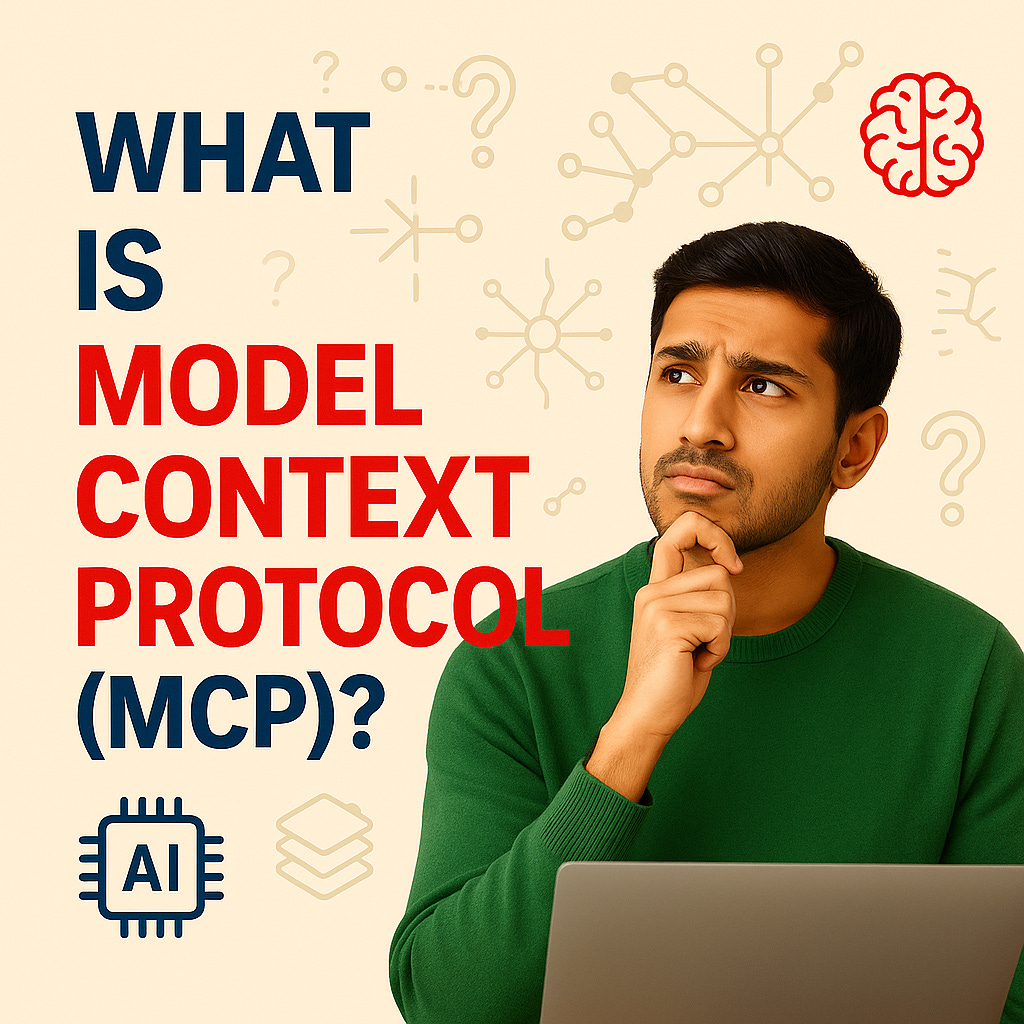The Model Context Protocol (MCP)
The Future of Plug-and-Play AI is Here
In the world of AI, there’s a common bottleneck: most powerful models are brilliant—but also blind.
They can't natively access your business data, customer files, or live APIs unless you build a custom integration or hard-code a solution.
That’s exactly what the Model Context Protocol (MCP) is about to change.
Let’s break it down.
Think of MCP as the “USB port” for AI models.
It’s an open standard that lets language models (like GPT or Claude) safely and efficiently interact with your data, tools, files, APIs, and even internal documents.
Created by Anthropic (makers of Claude) and now embraced by OpenAI, Google DeepMind, Amazon, and Meta, it’s quickly becoming a universal framework.
At its core, MCP is:
JSON-RPC-based (lightweight communication format),
Modular, so you can choose what to expose,
And secure, with strict control over what the model can see and do.
Why Was MCP Needed?
Before MCP, if you wanted your AI assistant to:
Pull CRM data,
Generate a report using your internal product catalog,
Or book meetings via Google Calendar,
You’d have to custom code each integration.
It was expensive, messy, and inconsistent.
With MCP, models can speak a common language with your tools. Imagine giving GPT the ability to request, not just respond. That’s the shift.
How MCP Works (Without the Jargon)
You define the “tools” (functions, APIs, data sources).
The model sends a request like:
"Get all customer complaints in May and summarize top 3 pain points."The MCP layer figures out:
What data to pull,
How to interpret it,
And what response format to use.
The model receives just enough context to answer meaningfully.
It’s safe, smart, and modular.
Who’s Using MCP Already?
Some practical use cases already emerging:
Enterprise Chatbots → Talking to internal knowledge bases, ticketing systems, FAQs.
Data Analyst Copilots → Querying internal databases via natural language.
Legal AI Assistants → Reading and summarizing contracts from secure vaults.
Customer Support → Surfacing relevant order, shipping, or support data instantly.
Think of it like this: “Bring the model to the data—without bringing the data to the model.”
What This Means for Data Teams & AI Builders
For startups: Build once, integrate anywhere.
For enterprises: Connect AI assistants to live workflows securely.
For analysts: Ask questions in plain English. Get real answers—from your systems.
For product teams: Focus on the experience, not the plumbing.
Is MCP Safe?
Yes. That’s one of the reasons it’s getting so much traction.
MCP gives you fine-grained control:
Decide which tools or data the model can access.
Log every call and interaction.
Prevent hallucinations by grounding AI in truth—your truth.
What’s Next?
MCP is still evolving, but it’s clear we’re entering an AI-native infrastructure era.
In the next 6–12 months, expect:
All major AI apps to offer MCP compatibility.
Developer tools to make integration no-code.
End-users to simply talk to their tools—and expect real results.
Final Thought
The next evolution in AI isn’t just smarter models—it’s context-aware models.
With MCP, the future of AI is not just about talking—it’s about doing.
And now? It’s easier, safer, and smarter than ever to make that future real



